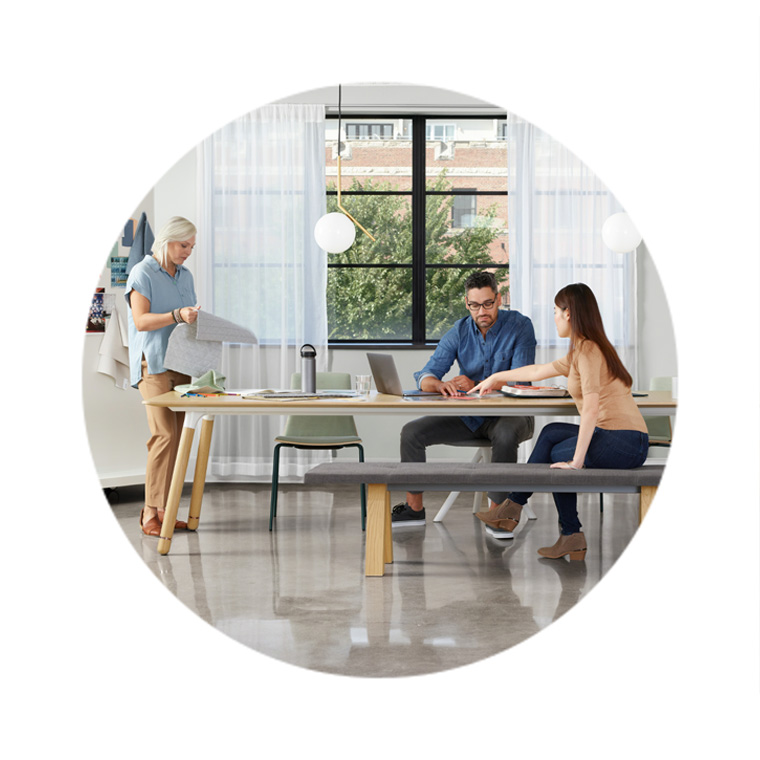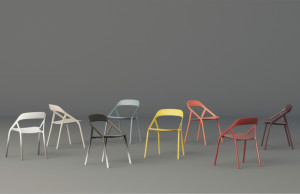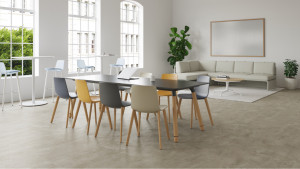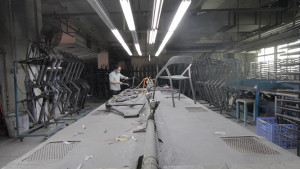Designing Space to Support Collaboration

In fields as disparate as healthcare and product development, interdisciplinary teams have emerged as the pathway to better, faster results—for patients, clients and other end users.
By bringing people from different disciplines and with varied specialties together, organizations today are finding new solutions to all kinds of challenges. Creative collaboration is driving innovation.
But cross-functional collaboration is hobbled without the space to support it.
Businesses that are committed to breaking down silos and promoting the cross-pollination of ideas need to provide creative spaces, huddle rooms, project areas, lounges or other communal spaces where people can gather—where they can ask questions, dissect problems, exchange ideas and show examples from their own work. Spaces where teams can be the “melting pot” driving progress.
How can designers help organizations create office spaces that support this kind of collaborative work? What kinds of spaces do workers need? Scroll down for three examples.
1. The lounge: a place for conversation and idea generation

This versatile lounge space provides two collaboration spaces in one. On the left, facing the bookshelves, is a conversation setting featuring the Lagunitas Lounge System and Sebastopol Tables placed on the Dreams Rug. On the right, beside the windows, are five table-and-chair settings from the Montara650 Collection. By offering comfortable settings for one-on-one and group interactions, spaces like these help get the interdisciplinary juices flowing.
2. The breakout room: a place for active problem solving

When a team is ready to roll up its sleeves and hammer out solutions, the best place to do it is around a table. A versatile surface like this SW_1 Low Collaborative Table encourages the kind of hands-on collaboration cross-functional teams thrive on. It might serve as a meeting table one day and a workbench the next.
3. The enclave: a place for reflection and focused individual work

How does a personal workspace like this one—an SW_1 Lounge chair paired with the SW_1 Low Conference Table—support collaboration? Simply by acknowledging the need for balance. After teams have come together for intense collaboration, team members need to break away for “punctuating moments of private time,” researchers say. According to Donna Flynn, who leads Steelcase’s WorkSpace Futures research group, finding the right balance between solitary work and group work “is critical for any organization that wants to achieve innovation and advance.”
Designers can support these organizational goals by providing spaces for both kinds of work: communal spaces for creative, interdisciplinary collaboration and personal enclaves for focus and respite.



















